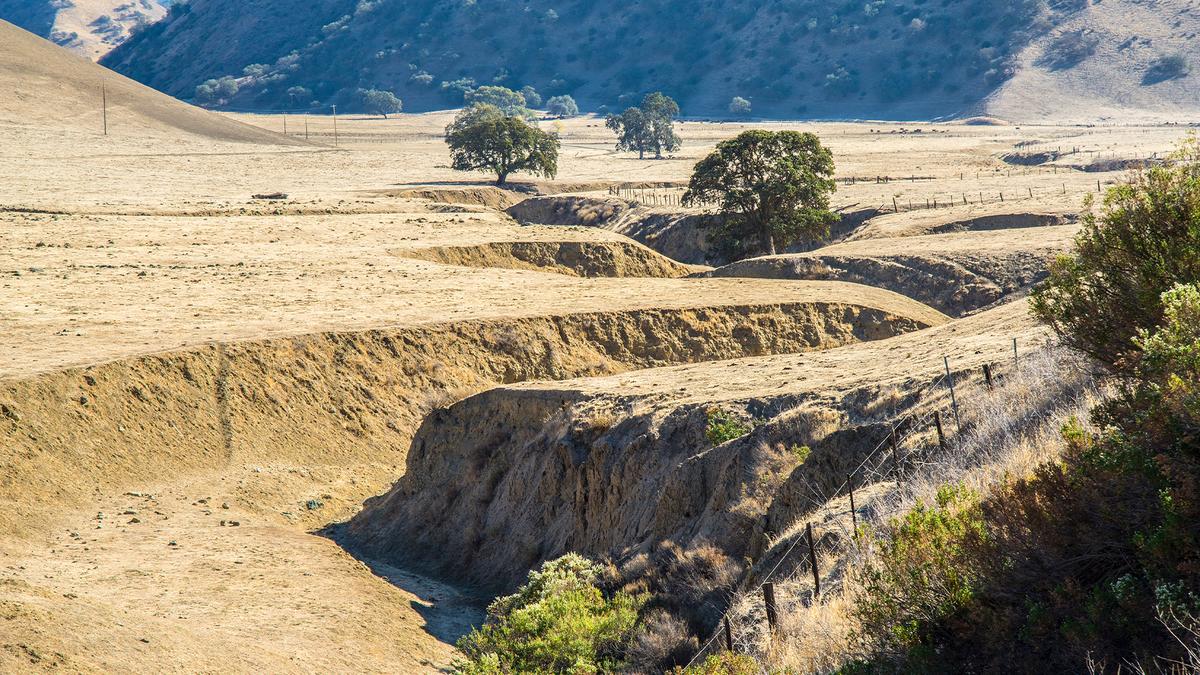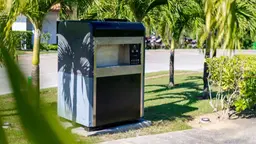Silicon Valley stands at the forefront of innovation. Yet, cutting-edge infrastructure lies a ticking geological time bomb. The San Andreas Fault, a complex network stretching across California, threatens to unleash a catastrophic earthquake that could reshape the region’s landscape and economy.
Seismologists have long warned of the impending danger. Records show that major seismic events along the San Andreas Fault occur every 100 to 150 years. With the last significant earthquake in 1906, many experts believe we are overdue for the next “Big One.”
The San Andreas Fault Zone (SAFZ) marks the boundary between the Pacific and North American tectonic plates. This geological feature has been responsible for some of the most powerful earthquakes in California’s history. The fault began moving between 28 and 30 million years ago and has shifted horizontally by approximately 300 to 350 kilometers.
The movement of these plates is slow but relentless, advancing about 50 millimeters per year. However, the faults themselves don’t move continuously. Instead, they remain locked until the accumulated stress overcomes the friction holding them in place, resulting in an earthquake.
California’s fault lines poised for destructive awakening
Recent paleoseismic research has focused on key sites along the SAFZ, particularly in areas with large populations or critical infrastructure. In Southern California, the San Andreas Fault has produced only two significant earthquakes in recorded history—one in 1812 and another in 1857. The 160-year gap since the last major event has raised concerns about the potential for an imminent quake.
Studies in Northern California paint a similar picture. The Hayward Fault near San Francisco last experienced a major earthquake in 1868. Despite gradual creeping, experts warn that this slow movement doesn’t release all the built-up stress. There is a one-in-three chance of a major earthquake on the Hayward Fault within the next 30 years.
The potential consequences of such an event are sobering. The 1906 San Francisco earthquake devastated the city with a magnitude of 7.9. Over 80 percent of San Francisco was destroyed, with damages estimated at $400 million—equivalent to $10.5 billion today. The human toll was equally staggering, with thousands injured and an estimated 1,000 to 3,000 lives lost.
Daisy Anderson, who was seven years old during the 1906 quake, recounted her experience: “Living through the quake taught me the importance of always being prepared. We never thought something like that could happen, but it did, and it changed everything.”
Today, the stakes are even higher. Silicon Valley, home to some of the world’s most valuable and influential tech companies, sits precariously close to the fault line. The potential disruption to global technology and commerce is incalculable.
Millions invested in cutting-edge quake defenses
Silicon Valley companies have invested millions in preparedness measures in response to this looming threat. Two primary tools have emerged: seismic monitoring with big data and AI elements and advanced structural development.
The United States Geological Survey Earthquake Early Warning System forms the backbone of seismic monitoring efforts. This vast network of sensors detects and measures seismic waves, providing crucial data for predictions and alerts. The system can detect an imminent earthquake within seconds, offering precious time for evasive action and emergency procedures.
However, this cutting-edge technology comes at a steep price. Individual sensors cost around $50,000, and the entire system, comprising nearly two thousand sensors, is estimated to cost $60 million.
On the structural front, significant advancements have been made since the 1906 disaster. Buildings constructed after the mid-1980s incorporate modern seismic design principles, while older structures have undergone extensive retrofitting.
One key innovation is the use of base isolators—devices that act as shock absorbers between a building’s foundation and its superstructure. The San Francisco Town Hall, for example, was fitted with 530 base isolators in 1995, allowing it to move up to 26 inches in any direction during an earthquake. This upgrade cost approximately $300 million.
Similar measures have been implemented across Silicon Valley. The Googleplex, Apple’s new headquarters, and Meta’s Menlo Park building all incorporate advanced seismic protection technologies. These include flexible joints for utility services to prevent secondary disasters like fires and flooding.
The hidden vulnerabilities threatening Silicon Valley’s future
Significant vulnerabilities remain. The San Andreas fault intersects with 39 gas and oil pipelines installed over the last 150 years, each with varying degrees of resilience. Ruptures in these lines could lead to widespread fires reminiscent of the 1906 disaster.
Infrastructure challenges extend to water supply and transportation networks. It’s estimated that around 60 percent of the water supply could be rapidly lost, creating immediate sanitation issues. Roads, bridges, and railways are also at risk of failure, potentially hampering emergency response efforts.
The economic impact of such a disaster would be staggering. Conservative estimates place the potential damage at over $200 billion, with ripple effects that could trigger a global recession.
As Silicon Valley continues to drive technological progress, the specter of the Big One looms large. While cutting-edge preparation and structural reinforcements offer some protection, the unpredictable force of nature remains a sobering equalizer. When the fault finally gives way, even tech titans may find themselves ducking for cover alongside the rest of us.
NEWSLETTER
The Blueprint Daily
Stay up-to-date on engineering, tech, space, and science news with The Blueprint.
By clicking sign up, you confirm that you accept this site's Terms of Use and Privacy Policy
ABOUT THE EDITOR
Deena Theresa A creative writer and journalist with a Master's degree in International Journalism, Deena's repertoire of work includes writing for Indian dailies like The New Indian Express and reading news on primetime television for a regional broadcaster. Having grown up in three countries, this third-culture kid feels that home is everywhere, and nowhere. Deena loves to dabble in music and art and believes that the latter and science share a symbiotic relationship.






0